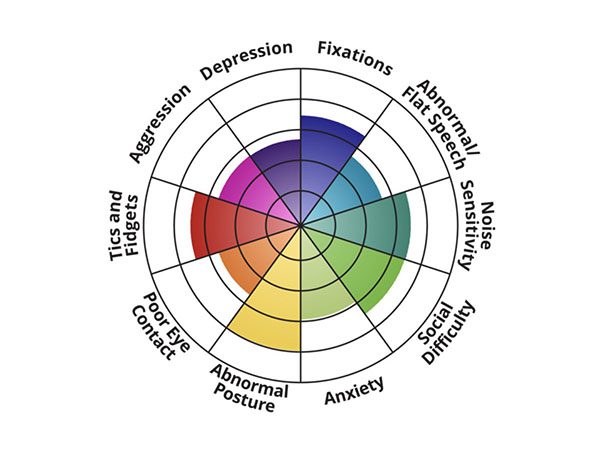 Autism Spectrum Disorder (ASD) is a complex neurodevelopmental condition that impacts individuals across multiple domains of functioning. Rather than viewing autism as a linear spectrum, it is more accurately conceptualized as a dynamic interplay of strengths, challenges, and unique characteristics that shape each person’s experience. This multidimensional perspective is often represented by a pie chart or wheel model, with each slice representing a core domain of the autism spectrum.
Autism Spectrum Disorder (ASD) is a complex neurodevelopmental condition that impacts individuals across multiple domains of functioning. Rather than viewing autism as a linear spectrum, it is more accurately conceptualized as a dynamic interplay of strengths, challenges, and unique characteristics that shape each person’s experience. This multidimensional perspective is often represented by a pie chart or wheel model, with each slice representing a core domain of the autism spectrum.
At the heart of the autism wheel lies social communication and interaction. Autistic individuals may struggle with interpreting nonverbal cues, engaging in reciprocal conversations, and developing age-appropriate friendships. However, many also possess remarkable abilities to connect deeply with others through shared interests, honesty, and loyalty.
Another key slice of the autism wheel encompasses restricted and repetitive behaviors. These may manifest as intense special interests, adherence to routines, or stereotyped movements. While these behaviors can be challenging in some contexts, they also reflect a unique way of engaging with the world and finding joy, meaning, and predictability.
Sensory processing differences are another integral part of the autistic experience. Autistic individuals may be hypersensitive or hyposensitive to various sensory stimuli, leading to experiences of sensory overload or seeking. Accommodating these diverse sensory needs through approaches like Emotional Transformation Therapy (ETT) and brain mapping can greatly enhance well-being and participation.
Executive functioning, which encompasses skills like planning, organization, and cognitive flexibility, is another domain where autistic individuals may face challenges. Therapies such as brain mapping and neurostimulation, as well as mindfulness practices, can support the development of these critical skills.
Emotional regulation is the final key slice of the autism wheel. Autistic individuals may struggle with identifying, expressing, and managing emotions, leading to experiences of overwhelm or shutdown. Therapies such as Brainspotting, Lifespan Integration, and parts-based approaches can help autistic individuals develop greater emotional awareness and resilience.
The prevalence of autism has increased significantly in recent years, with current CDC data indicating that approximately 1 in 36 children are on the spectrum. This increased recognition has led to earlier identification and more comprehensive support for autistic individuals and their families.
When seeking to support autistic individuals, it is essential to consider the unique configuration of their autism wheel and tailor interventions accordingly. Cutting-edge therapies like Brainspotting, which uses eye position and bilateral stimulation to process unresolved trauma and emotional distress, can be particularly effective for autistic individuals navigating sensory and emotional challenges.
Similarly, brain mapping and neurostimulation techniques like qEEG and neurofeedback can help optimize brain function and reduce stress by identifying patterns of neural activity that may contribute to autistic experiences. These approaches, along with holistic micronutrition and somatic therapies, can be valuable additions to a comprehensive treatment plan.
For autistic individuals seeking to explore their identity, gifts, and challenges more deeply, Jungian Therapy offers a rich framework for self-discovery and individuation. By working with dreams, archetypes, and the creative imagination, autistic individuals can develop greater self-awareness and authenticity.
Other evidence-based approaches like EMDR (Eye Movement Desensitization and Reprocessing) Therapy and parts-based therapies such as Internal Family Systems (IFS) can help autistic individuals process traumatic experiences, develop self-compassion, and integrate their diverse parts into a more cohesive sense of self.
Mindfulness and meditation practices are also invaluable tools for cultivating self-awareness, emotional balance, and resilience in the face of life’s challenges. By learning to observe inner experiences with curiosity and non-judgement, autistic individuals can develop a more grounded relationship with themselves and the world around them.
As our understanding of autism continues to evolve, it is crucial that we embrace a multidimensional perspective that honors the kaleidoscope of autistic experiences. By integrating innovative therapies and approaches that target the core domains of the autism spectrum, we can empower autistic individuals to thrive and share their unique gifts with the world.
The Five Core Domains of Autism
1. Social Communication and Interaction
At the heart of the autism wheel lies social communication and interaction, affecting how individuals connect with others and navigate social situations.
Common Challenges:
- Difficulty interpreting nonverbal cues like facial expressions, body language, and tone of voice
- Struggles with initiating and maintaining reciprocal conversations
- Challenges in developing age-appropriate friendships and peer relationships
- Difficulty understanding social rules, expectations, and unwritten social codes
- Problems with perspective-taking and understanding others’ thoughts and feelings
- Challenges with joint attention and shared social experiences
- Difficulty with social timing and turn-taking in conversations
Unique Strengths:
- Remarkable ability to connect deeply with others through shared interests
- Exceptional honesty and direct communication style
- Strong loyalty and commitment to friendships
- Authentic self-expression without social pretense
- Ability to form meaningful connections with like-minded individuals
- Direct and clear communication preferences
- Strong moral compass and sense of fairness
Support Needs:
- Social skills training and practice opportunities
- Clear, explicit instruction on social rules and expectations
- Visual supports for understanding social situations
- Peer mediation and structured social activities
- Communication apps and assistive technology
- Safe spaces to practice social interactions
- Education for peers and family members about autism
2. Restricted and Repetitive Behaviors
Another key slice of the autism wheel encompasses restricted and repetitive behaviors, reflecting unique ways of engaging with the world.
Common Challenges:
- Intense special interests that may interfere with daily activities
- Rigid adherence to routines and difficulty with transitions
- Stereotyped or repetitive movements (stimming)
- Inflexibility when plans change unexpectedly
- Repetitive speech patterns or echolalia
- Compulsive behaviors or ritualistic activities
- Difficulty adapting to new environments or situations
Unique Strengths:
- Deep expertise and knowledge in areas of special interest
- Attention to detail and pattern recognition abilities
- Systematic and methodical approach to tasks
- Ability to find joy and meaning through repetitive activities
- Strong memory for specific information and facts
- Consistency and reliability in preferred activities
- Unique perspective and creative problem-solving within interests
Support Needs:
- Structured schedules and visual timetables
- Gradual introduction to changes and transitions
- Sensory tools and fidget items for self-regulation
- Opportunities to pursue and share special interests
- Clear expectations and boundaries
- Predictable environments and routines
- Support for developing flexibility and coping strategies
3. Sensory Processing Differences
Sensory processing differences are an integral part of the autistic experience, affecting how individuals perceive and respond to sensory input.
Common Challenges:
- Hypersensitivity to sounds, lights, textures, or smells
- Hyposensitivity requiring more intense sensory input
- Sensory overload leading to overwhelm or shutdown
- Difficulty filtering background sensory information
- Sensory seeking behaviors that may be disruptive
- Challenges with sensory integration and processing
- Inconsistent responses to sensory stimuli
Unique Strengths:
- Enhanced sensory awareness and discrimination
- Ability to notice subtle changes in environment
- Heightened appreciation for certain sensory experiences
- Unique sensory perspectives and experiences
- Strong preferences that can guide decision-making
- Ability to use sensory input for self-regulation
- Creative use of sensory tools and strategies
Support Needs:
- Sensory assessments and individualized sensory diets
- Environmental modifications and accommodations
- Sensory tools and equipment (weighted blankets, noise-canceling headphones)
- Emotional Transformation Therapy (ETT) and brain mapping
- Occupational therapy focused on sensory integration
- Safe spaces for sensory regulation and breaks
- Education about sensory needs for caregivers and educators
4. Executive Functioning
Executive functioning encompasses critical cognitive skills that help individuals plan, organize, and navigate daily life.
Common Challenges:
- Difficulty with planning and organizing tasks
- Problems with time management and estimation
- Challenges with working memory and information processing
- Inflexibility in thinking and problem-solving approaches
- Difficulty with task initiation and completion
- Problems with attention regulation and focus
- Challenges with impulse control and self-monitoring
Unique Strengths:
- Ability to hyperfocus on preferred tasks or interests
- Strong attention to detail in areas of interest
- Systematic approach to familiar tasks
- Ability to think outside conventional frameworks
- Strong memory for specific facts and procedures
- Consistent performance in structured environments
- Creative problem-solving within areas of expertise
Support Needs:
- Visual schedules and organizational tools
- Breaking tasks into smaller, manageable steps
- Brain mapping and neurostimulation therapies
- Mindfulness practices and self-awareness training
- Technology supports and apps for organization
- Clear expectations and deadlines
- Regular check-ins and progress monitoring
5. Emotional Regulation
Emotional regulation represents the ability to identify, understand, and manage emotions effectively.
Common Challenges:
- Difficulty identifying and labeling emotions
- Challenges with expressing emotions appropriately
- Overwhelming emotional responses to triggers
- Difficulty managing stress and anxiety
- Problems with emotional recovery and resilience
- Challenges with understanding others’ emotions
- Tendency toward emotional shutdown or meltdowns
Unique Strengths:
- Intense emotional experiences and empathy
- Authentic emotional expression
- Strong emotional connections to interests and values
- Ability to experience joy and wonder intensely
- Honesty about emotional experiences
- Capacity for deep emotional processing
- Strong sense of justice and fairness
Support Needs:
- Emotional literacy education and practice
- Coping strategies and self-regulation techniques
- Brainspotting and trauma-informed therapies
- Lifespan Integration and parts-based approaches
- Mindfulness and meditation practices
- Safe spaces for emotional expression
- Mental health support and counseling
Current Statistics and Recognition
The prevalence of autism has increased significantly in recent years, with current CDC data indicating that approximately 1 in 36 children are on the spectrum. This increased recognition has led to earlier identification and more comprehensive support for autistic individuals and their families.
Bibliography:
- American Psychiatric Association. (2013). Diagnostic and statistical manual of mental disorders (5th ed.). https://doi.org/10.1176/appi.books.9780890425596
- Baum, S. H., Stevenson, R. A., & Wallace, M. T. (2015). Behavioral, perceptual, and neural alterations in sensory and multisensory function in autism spectrum disorder. Progress in Neurobiology, 134, 140-160. https://doi.org/10.1016/j.pneurobio.2015.09.007
- Bezdek, J., Summers, J. A., & Turnbull, A. (2010). Professionals’ attitudes on partnering with families of children and youth with autism spectrum disorders. Education and Training in Autism and Developmental Disabilities, 45(3), 356-365. https://www.jstor.org/stable/23880108
- Bourgeron, T. (2015). From the genetic architecture to synaptic plasticity in autism spectrum disorder. Nature Reviews Neuroscience, 16(9), 551-563. https://doi.org/10.1038/nrn3992
- Courchesne, E., Pramparo, T., Gazestani, V. H., Lombardo, M. V., Pierce, K., & Lewis, N. E. (2019). The ASD Living Biology: From cell proliferation to clinical phenotype. Molecular Psychiatry, 24(1), 88-107. https://doi.org/10.1038/s41380-018-0056-y
- Geschwind, D. H., & State, M. W. (2015). Gene hunting in autism spectrum disorder: On the path to precision medicine. The Lancet Neurology, 14(11), 1109-1120. https://doi.org/10.1016/S1474-4422(15)00044-7
- Karimi, P., Kamali, E., Mousavi, S. M., & Karahmadi, M. (2017). Environmental factors influencing the risk of autism. Journal of Research in Medical Sciences, 22(1), 27. https://doi.org/10.4103/1735-1995.200272
- Lord, C., Charman, T., Cusack, J., Guillaume, D., Frazier, T., Jones, E., Jones, R., Pickles, A., State, M. W., & Taylor, J. (2020). Autism spectrum disorder. Nature Reviews Disease Primers, 6(1), 5. https://doi.org/10.1038/s41572-019-0138-4
- Lyall, K., Croen, L., Daniels, J., Fallin, M. D., Ladd-Acosta, C., Lee, B. K., Park, B. Y., Snyder, N. W., Schendel, D., Volk, H., Windham, G. C., & Newschaffer, C. (2017). The changing epidemiology of autism spectrum disorders. Annual Review of Public Health, 38(1), 81-102. https://doi.org/10.1146/annurev-publhealth-031816-044318
- Maenner, M. J., Shaw, K. A., Bakian, A. V., Bilder, D. A., Durkin, M. S., Esler, A., Furnier, S. M., Hallas, L., Hall-Lande, J., Hudson, A., Hughes, M. M., Patrick, M., Pierce, K., Poynter, J. N., Salinas, A., Shenouda, J., Vehorn, A., Warren, Z., Constantino, J. N., . . . Cogswell, M. E. (2021). Prevalence and characteristics of autism spectrum disorder among children aged 8 years – Autism and Developmental Disabilities Monitoring Network, 11 sites, United States, 2018. MMWR Surveillance Summaries, 70(11), 1-16. https://doi.org/10.15585/mmwr.ss7011a1
- Masataka, N. (2017). Implications of the idea of neurodiversity for understanding the origins of developmental disorders. Physics of Life Reviews, 20, 85-108. https://doi.org/10.1016/j.plrev.2016.11.002
- Pellicano, E., & Stears, M. (2020). Bridging autism, science and society: Moving toward an ethically informed approach to autism research. Autism Research, 4(4), 271-282. https://doi.org/10.1002/aur.1375
- Samson, A. C., Hardan, A. Y., Lee, I. A., Phillips, J. M., & Gross, J. J. (2015). Maladaptive behavior in autism spectrum disorder: The role of emotion experience and emotion regulation. Journal of Autism and Developmental Disorders, 45(11), 3424-3432. https://doi.org/10.1007/s10803-015-2388-7
- Singer, J. (2017). Neurodiversity: The birth of an idea. Kindle Edition.
- Tager-Flusberg, H., & Kasari, C. (2013). Minimally verbal school-aged children with autism spectrum disorder: The neglected end of the spectrum. Autism Research, 6(6), 468-478. https://doi.org/10.1002/aur.1329
:




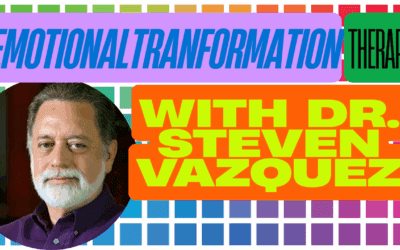
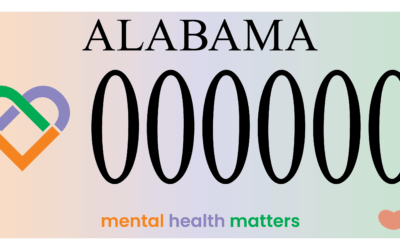

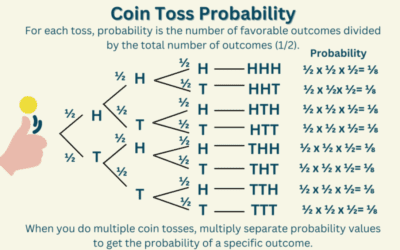
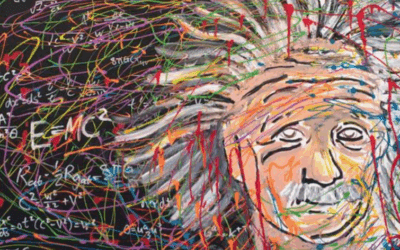






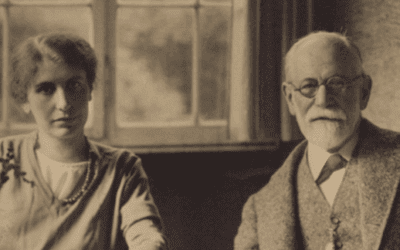
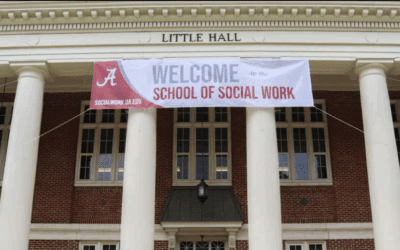






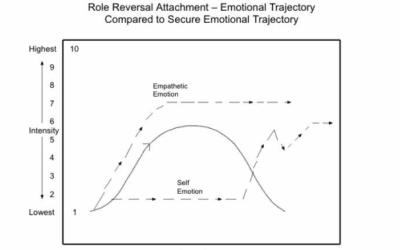


0 Comments